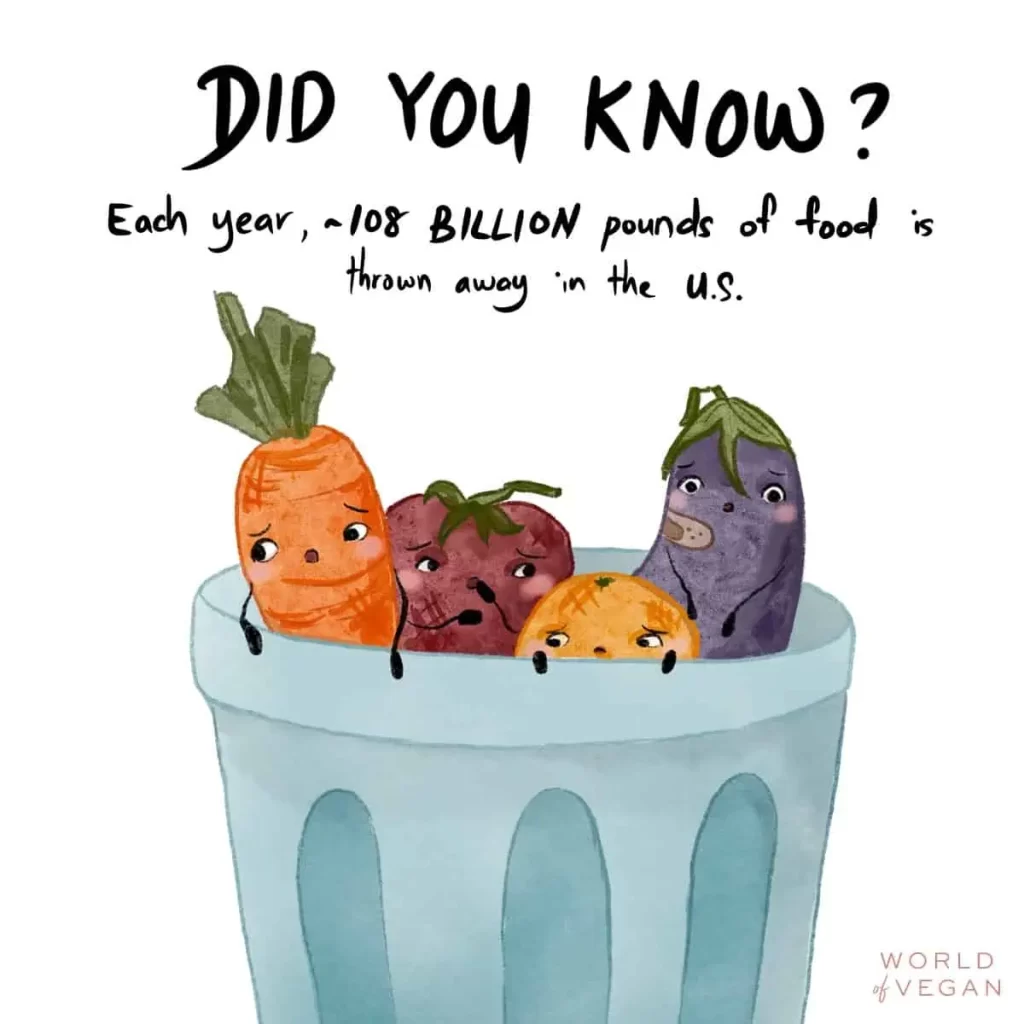Preventing food from going to waste is one of the easiest and most powerful actions you can take to save money and lower your climate change footprint by reducing greenhouse gas (GHG) emissions and conserving natural resources.
#1 Introduce mindfulness into your shopping routine.
Saving food in your home starts with a mind-set change. It includes being intentional about your purchases and planning ahead for meals. The basic premise is to outline a meal plan for the week, which will also minimize your time in the store. To start, consider what meals you will be making for the week, how many people need to be fed, and what kind of leftovers you’d like. Then, check on what you’ve currently got in your freezer, pantry, and fridge to see what you can use up. Once you’ve planned your meals, determine how much food you will need and generate a shopping list. And once you’re at the store, exercise restraint—and use that list.
#2 Find ways to use all the food you bring home.
With a little thought, you can find a use for everything. That could mean sautéing the beet greens as a nutritious side dish for dinner (sesame seeds really take them to the next level). Or maybe it’s finding a complementary recipe to use up the heel of stale sourdough breadthat you baked. Whatever you happen to have on hand, you’ll likely find creative opportunities to use it up through Save the Food’s recipe pages. My favorite is this Ugly Vegetable Pasta.
And don’t forget the leftovers. Once they’re packed into containers, keep them front and center in your refrigerator (pushed to the back, they may be forgotten), and plan to eat them. I like to put a sign on leftovers saying “Eat This First” as a reminder.
#3 Eat (or drink) the peels, too!
Do you really need to remove the outer layer of your fruits and veggies? In some cases (e.g., bananas, avocados, pineapples), yes, but many items we peel can be given a good wash and eaten whole. That goes for carrots, potatoes, apples, you name it! Another option is to use the peels for something else, like potato peel chips or apple peel tea. I always keep a “stock bag” in my freezer where I collect trimmings of vegetables. When the bag is full, I toss it in a pot of boiling water for several hours and voilà, vegetable stock!
#4 Become a storage pro.
Did you know that the best way to store celery is upright in a glass of water on a shelf in your fridge? Or that bananas should not be stored next to other fruits on the counter, and that once ripe, they should be moved to the fridge? Proper storage of food can increase its lifetime and reduce spoilage. Our interactive Save the Food storage guide offers tips, tricks, and info to keep your food fresh and tasty. It will also help you organize your fridge to maximize food freshness and storage potential.
#5 Make friends with your freezer.
The freezer can be a waste-free kitchen’s best pal. Freezing produce, meat, dairy—even lightly beaten eggs!—is basically like hitting the pause button. My favorite foods to freeze are dark leafy greens that are starting to wilt. I simply chop them up, put them in a plastic bag in the freezer, then use them by the handful in smoothies, sauces, and curries. Some tips for becoming a successful food-freezing champion: Freeze in portions, use airtight containers to reduce freezer burn, and do a survey of what’s in the freezer every once in a while, since nothing lasts forever!
#6 Revive food that is on its way out.
Wilted lettuce, brown bananas, spoiled milk—all of these give me food waste anxiety. But there is hope! You can often revive or use food that is on its way out or starting to spoil. Those brown bananas? Peel them and put them in the freezer for smoothies or future banana bread. Wilted lettuce? I like to put it in a bowl of cold water until it gets crisp again. If you’re concerned about food safety, keep reading.
#7 Understand date labels.
When I hear friends and family mention the “expiration” date as the reason that they tossed some food, it makes me cringe. Why? Food expiration dates have little to do with food safety; they are not federally regulated and aren’t relevant numbers for consumers (with the exception of infant formula). The various categories of date labels (“sell by,” “use by,” “best before”) make their meanings difficult to decipher, but generally they are indicators of when food will be at its peak quality. My go-to strategy for figuring out if food is still good: If it’s been safely stored and I don’t see any mold, I rely on the sniff or taste test.
#8 Compost remaining scraps.
You’ve shopped using your well-planned list; you got creative and used a new recipe requiring a variety of peels, stems, and foods from your freezer; you’ve even used that milk that was past its best-by date. But alas, you still have inedible scraps, like the ones from the stock or those browned banana peels that you just can’t find a way to eat. It’s inevitable. Do you have a backyard or patio? Consider setting up a home composting bin—which you can do even without a backyard. If you don’t have the space, consider joining a community garden, many of which allow gardeners to drop off compost. Or check with your local government or waste hauler to see if either one provides a compost drop-off or collection service.

